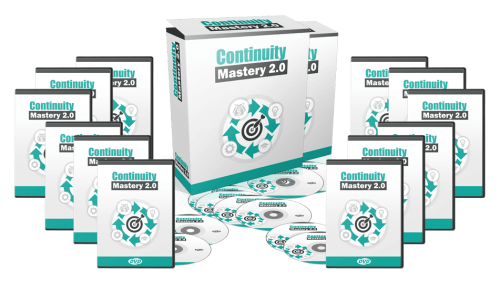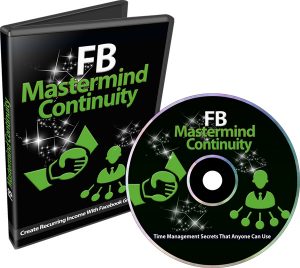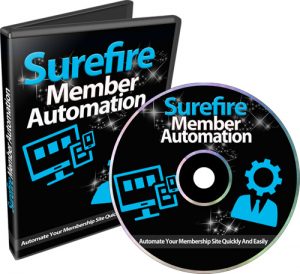
Is Your Membership Site Sticky Enough?
10 Tips to keep members glued to your site…
The more times your customers visit your site, the more time they will have invested in your relationship and the more they will come to trust and rely on you.
By building up their loyalty in this way, there is more chance that they will buy from you, follow your advice and buy your affiliate products, or click on ads that you recommend.
Put simply, a sticky site equals customer loyalty. Customer loyalty equals revenue.
1. Content – We can’t stress the importance of content enough. Keep the content up to date, and ‘time sensitive’. Remove out of date content so that it doesn’t affect the credibility of your site.
2. Give your site a personality – There is a huge amount of information on the internet, and you can be sure your members could find what you are providing elsewhere. What your members are really paying for is the way you present that information.
3. Remain focused on your niche – Don’t forget that your members joined your site because they had an interest in your niche. While it is fine to include content on a slightly different subject if you are sure it will be relevant and interesting, never lose sight of your original subject. Wander too far off the subject and you may find your customers wandering off your member list.
4. Make information easy to find – Ensure the content on your membership site is organized in such a way that your members will find what they want easily. If your members view your site as a valuable information resource rather than just another website, they will want to use it again and again.
5. Provide what your customers want – Encourage your customers to ask for an article or information on a certain subject if they can’t find it. Writing an article specifically for one customer may seem like a lot of work, but if you think long term, that customer may then stay with you for the lifetime of your membership site.
6. Keep in touch with your members – Contacting your members via e-mail is essential to keep them engaged with your site. Send your members updates, informative newsletters, and reminders, and ask them for their feedback.
7. Ask them to take part in surveys – Ask your members to complete a survey about your membership site and then make sure you act on their feedback and let them know you have done so. Send out a special edition of your newsletter showing some of the results of your survey and detailing how you have responded and any changes you have made. Feeling that they have had a hand in shaping your site will really make your members feel engaged in your online community.
8. Allow customization of your homepage – Having some functions that your members personalize on your site will really make them feel involved. Even a simple message at the top of the home page saying ‘Welcome back [member name]’ will have a huge impact on making your members feel valued.
9. Build a sense of community – Being part of an online community is one of the main reasons your members will renew their membership.
10. Promote an active forum – This provides a place for your members to get to know each other and begin to care about each other. Stopping their membership once they have become involved in your forum would be like losing a whole group of friends. Provide a function that allows your members to send private messages between each other. If you run competitions, or encourage your members to submit content, make sure you acknowledge the
winners or contributors. Nothing makes a member feel a part of your site like seeing their name in the latest newsletter.
Which Membership Model Makes the Most Sense?
The membership model you choose makes a huge difference on the profits that you will see today and in the future. Of course, which membership pricing model is right for you depends largely on the type of site you have.
Here are a few guidelines and tips to help you keep your subscription list growing.
Pricing model, which one is right for you…
Weekly subscriptions?
Weekly subscription models are not used very frequently for membership sites. They require a rapid turnover of content, as members need a reason to renew their subscription each week. They tend to rely quite heavily on forums and blogs to keep members engaged.
If you are using a weekly subscription model you can make more revenue than with other models. Your members will feel that they are paying small amounts, but because they are paying so regularly, the revenue soon mounts up.
However, you will have to work hard for the extra revenue with frequent updates.
One of the main problems with weekly subscription sites is members that just join for one week, download all the available content, and then cancel their membership.
Monthly subscriptions?
This is the most popular pricing model for membership sites. It still requires a lot of effort to provide fresh content each month, but the pressure is a little less than with the weekly subscription model. Again, these sites tend to rely quite heavily on forums and blogs to keep their members engaged.
Quarterly subscriptions?
Quarterly subscription membership sites make a little less subscription revenue overall, but you have the advantage that you have more capital upfront from your members to invest in your site.
You also have a guaranteed member for three months to sell additional products to. You do need to keep in regular contact with your members, however, as they don’t have a regular monthly or weekly payment going off their credit card to remind them about the site.
This model is better suited to a site that has time consuming content. One example of this type of content would be training courses that take place over a period of several weeks.
Annual subscriptions?
The annual subscription model is ideal for sites with very high content value. To convince your members to pay a full year’s membership fees up front, you will have to prove that your site is worth the investment.
You might consider a short trial period with limited access, or a money back guarantee within the first month if they are not satisfied.
This model will usually generate less subscription income overall than the previous models, but again you will have the capital sooner to invest in your site.
You will have guaranteed members for a year, but you will need to remind them to visit the site regularly with targeted marketing and newsletters.
One-off subscription?
The one-off subscription model, also known as lifetime membership, is ideal for membership sites that are designed to gain more revenue from selling products, affiliate programs, and advertising, than from membership subscriptions.
Although you will need to update your site regularly to retain your members’ interest, and keep them buying from you, there is less pressure to provide fresh content to hold onto regular subscriptions.
When you are deciding on a price for your one-off subscription, you will want to determine your lifetime membership value.
Here are a few ideas to consider.
• Offer a free or reduced fee trial period. You could invite your members to join your site for a trial period of between a week and a month, to get them involved in the site.
• Some of the membership site software packages available enable you to upgrade your members to a fully paid membership automatically when the trial period is over.
• Most membership sites that offer this trial period take the credit card details of their members up front, and then charge for the continued membership automatically, unless the member cancels.
• Have different access levels. Have various categories of members who have access to different content and parts of the site, depending on which subscription level they choose. Tantalize your members with limited access with the premium content they could find in the more expensive member areas.
• Many membership software packages allow up to five subscription levels, including one free level.
• Change your subscription model. You could offer your members monthly subscriptions when they initially join your site. After three months you could ask them if they would like to change to a quarterly subscription for a slightly reduced rate. You could even offer to take the amount that they would have saved if they had taken quarterly subscription from the start, away from their next quarter’s subscription.
• While this does mean that the subscription revenue you get from that customer decreases, it also means you keep that customer for a longer period, during which you can sell them other products. You also have more capital up front to spend on advertising and optimizing your site, so your revenue will increase in other ways.
What Is Your Lifetime Member Value?
And how does it affect your business decisions?
The concept of lifetime customer value is an important factor in determining what your subscription prices are. You will not be able to accurately determine your lifetime member value until your site has been up and running for some time, but using educated assumptions to work out a potential lifetime customer value can be a very beneficial part of your business plan.
What is lifetime value?
In simple terms each member’s lifetime value is the average profit they will generate for you during the time they are a member of your site.
Each of your members can create revenue for you in a number of ways:
• Initial subscription fee
• Repeat subscription fees
• Product purchases
• Affiliate purchases
• AdSense links
The more complex your site, the more factors there are to take into account.
To calculate the lifetime value of a member you need to take the average initial subscription, plus the average revenue from further purchases (these include repeat subscriptions, purchases, click-throughs etc.), multiplied by the average number of repeat purchases in one time period (a month, a year etc.), multiplied by the average number of time periods a customer remains a member.
Here is a simple example:
• Your members pay $50 for their one time subscription.
• They spend on average $20 twice a month on purchasing further products etc.
• Your average customer remains a member for 6 months.
• Your lifetime member value = 50 + 20 x 2 x 6 = $290
Knowing your lifetime member value will steer your business decisions
Knowing how much your average customer is worth enables you to determine how much resource you can afford to put into attracting new members.
You can use the lifetime member value to create a budget for promoting and developing your site that ensures you aren’t spending more than you are making.
Keeping a database with detailed records of your members’ purchases will allow you to determine a more accurate lifetime member value over time.
This can help you to adjust your prices and strategies to maximize your profit without losing your customers. You can monitor the effect that changes to your site have on your lifetime member value.
As subscription businesses, membership sites rely on recurring business. Once your membership site is fully functioning, about 75% of your sales will come from your current subscriber base, so you will want to give a great deal of thought to your rebilling strategies.
There are two main models to consider when determining your rebilling strategy:
1. Optional renewal
If you use optional renewal, your members will be notified that their membership is due to expire, and will be given the option to renew it.
If you use this method, you will want to make it as easy as possible for your members to renew, and send them at least two reminders.
2. Automatic renewal
Automatic renewal is also known as continuous service. If you choose to use this method, your members will receive a notification that a subscription payment has been debited from their account.
This has the obvious advantage over optional renewal in that your members do not have to make any effort to renew their membership. On the contrary, they have to make an effort not to renew it.
Don’t forget the power of loyalty.
A loyalty scheme will encourage your customers to maintain their membership. Recognizing and rewarding your members’ loyalty is a great way to keep them subscribing to your site.
If you choose to follow a loyalty scheme, you can publish details on your site, and you can enable your members to track their progress through your scheme in the same way as they can access their personal details.
Simple Solutions To Overcome the Headaches Of Membership Site Payment Processing
Payment processing for membership sites can be a headache. Every member has a different renewal date, their products to pay for, subscriptions to upgrade, security to consider and of course you want it to be easy for your customers.
Here are a few simple solutions to make your life easier and more profitable too!
Practical Payment Processing
Credit Cards
By far the most common method of paying a membership site subscription is by credit card.
To accept and process credit card payments, you need to open a particular type of account known as a merchant account.
The advantages of having your own merchant account include quick payment processing so you receive funds without delay, and not having to pay any processing fees.
However, you may not be able to open your own merchant account for the following reasons;
• Having a poor credit history
• Living in an area where merchant accounts are not issued
• Not having enough transactions initially to justify the account
In any of the above cases you could consider using a third party merchant account processor.
These take two forms.
1. Using online billing solutions such as Click Bank and the PayPal shopping cart can be one alternative to opening your own merchant account.
2. A number of hosting services such as BizHosting and Hostway offer free merchant accounts.
PayPal
Many online businesses now feel the need to offer the option of paying through PayPal. It is thought to increase sales as customers see it as more secure than paying by credit card and it is a quick and easy way to subscribe for the millions of internet users who already have a PayPal account set up.
Checks
You might think that anybody considering joining a membership site would be comfortable with using online payment methods. However, there will always be a number of people who are worried about the security of paying over the internet, and with high profile cases of credit card fraud recently in the news.
For this reason, it may be worth it to offer an alternative method of payment, such as paying by check.
You could provide an address for potential members to send a check to, and ask them to include their personal details and an e-mail address. Once their check has cleared you can activate their account and e-mail them with their log in details.
This does create more work and it’s not the right option for everyone, but for some membership sites it’s a good option to offer.
Make your payment process as simple as possible. If your customer has to jump through hurdles to pay you, they may very likely change their mind.
Tips For Keeping Your Website On The Up And Up
The last thing you want to think about are the legal ramifications of owning and operating a membership site. A quick and easy way to make sure that everyone knows what to expect is to craft a ‘Terms and Conditions” statement for your site.
Here’s how…
Creating your terms and conditions
Before your start to write your membership site’s terms and conditions, think about what you really want to achieve with them. There are a few items that you really want to cover, but otherwise what you include in your terms and conditions is up to you.
1. Disclaimer of liability
The disclaimer of liability is perhaps the most important part of your terms and conditions. It is advisable to state that the use of the site is entirely at the member’s own risk, and that you are not responsible for any damages to the member whether they be directly or indirectly linked to the use of your site.
You may also want to state that you will not take responsibility for the content of other sites that your membership site is linked to, and your are not liable for damages caused by the use of those sites, for example any viruses that are transmitted via downloads on those sites.
2. Membership term
You could use your terms and conditions to state the initial term of your membership, and the process for renewing membership. You might also outline the method for canceling membership.
If you have a trial membership period, you could state what the members will have access to during that trial period, and the process for subscribing to full membership at the end of the trial period.
3. Membership access
You could detail what your members will have access to as part of their membership. If you have different levels of membership with varying subscription levels, you can include information about these in your terms and conditions.
You could also include your rules about sharing membership accounts. If sharing is prohibited and the site can only be accessed from one computer at a time with a particular membership account, you want to state this in your terms and conditions.
4. Pricing and payment
You could state whether price changes will apply to existing or returning members, or whether they will always be entitled to the same subscription price as when they joined.
You might indicate how any changes in pricing will be communicated to your members.
You will probably want to tell your members which payment processing company or software you are using, and outline the measures you are taking to ensure payment security.
5. Site etiquette
This can include the tone and language of forum postings and blog comments, and the advertising or promotion of members’ businesses on the site.
State that you reserve the right to cancel the membership of any member who does not comply with your site etiquette policy at your own discretion.
You might also state that you reserve the right to remove any comments or posts from the site that you do not believe to be appropriate. In addition, you may want to write that the views and opinions expressed in your member forums do not necessarily represent your own views and opinions.
6. Data protection and privacy
You can refer your members to the data notice we discussed earlier, or you can incorporate the data notice itself into your terms and conditions.
Let your members know what information is being stored about them and what it is being used for. Also let them know what security measures, such as encryption, you are using to keep that information safe.
You might also tell your members what will happen to their personal details if they cancel their membership.
7. Copyright
Let your members know that the content on the membership site is your property and that it is protected by copyright where relevant.
Make it clear to your members what they are allowed to do with the content of your site. If there are articles that they are permitted to reprint on their own sites as long as they include a link back to your site, state this.
9. Customer service
You could use your terms and conditions to state how you will deal with customer queries; whether this will be via e-mail or over the telephone. You might also state the timeframe within which they can expect a response to their query.
10. Local laws
Finally you might state which country or state’s laws your membership site is subject to.
3 Vital Membership Site Legal Questions Answered
Question #1 Is my membership site protected by copyright?
In theory web pages are protected by copyright as soon as they are created. However, in the U.S. your website will need to be registered with the U.S. Copyright Office within three months of publication for you to bring a case against someone that copies it.
Once you have registered your web pages, you are legally protected if someone should decide to copy your page word for word.
It is a good idea to post a copyright notification on each of your web pages. This is not necessary to bring a copyright law suit, but it will help your case if you show that the person that copied your work was aware it was protected by copyright.
It may also scare some people into not using your work.
There are some limits to web page copyright Copyright only protects the exact expression of your web pages. It does not protect the facts or ideas you use. If someone copies your ideas, but expresses them in a different way, they are not breaking copyright law.
If a piece of work is created independently, but by coincidence happens to be similar to or the same as another previously created piece of work, it is not seen to be breaking copyright law.
This can be difficult to prove for the author accused of copyright infringement, but equally difficult to disprove for the copyright owner.
Two concepts that make content exempt from copyright law are ‘fair use’ and ‘implied permission’. It is useful to be aware of these exemptions.
Fair use
The concept of ‘fair use’ is a rather unclear limit to copyright protection. If you use another person’s work, but acknowledge that it is their work, this is allowed under ‘fair use’.
If you use another person’s work but do not make any commercial gain from it you may not be breaking copyright law under ‘fair use’. Also, if your use of their work does not negatively impact their income, this may be covered by ‘fair use’.
Implied Permission
This is a particularly relevant concept for membership site owners. When one of your members posts a thread on your forum, or a comment on your blog, they are the author of the work, but they are giving you ‘implied permission’ to use it as you wish.
This also applies to any e-mail that your customers send to you. Unless they specify otherwise, their words are not protected by copyright law.
Question #2 What is covered by data protection policies?
Privacy and Data Protection
Any information you store about your customers comes under data protection. If you store information about your customers or members, you are legally obliged to tell them what you are using it for.
Your site must include a data notice, which explains which data you store and how you use it. Make your data notice easily accessible on your site, preferably with a link from the page where your members input personal details.
Use a method of encrypting your members’ personal details, especially their payment details.
It is reassuring for your members to know that you do this, so you could either mention it on the page where they input their details, or have it as one of the questions on your FAQ page.
When your customers enter their personal details, you must give them the option of stating if they do not want you to pass these onto third parties, or use them for marketing purposes.
The standard format for this is an ‘opt in’ or ‘opt out’ tick box underneath the form the customer has to fill out. Many sites try to hide these tick boxes in an area of small print, so they are complying with data protection law, but their customers do not opt out.
Data protection policies state that you should store your customer’s details for the shortest possible time. This means that you do not want to store information about customers that you don’t need at the current time.
For membership sites, this should mean deleting personal information when your members cancel their subscription.
Privacy and data protection laws give your customers the right to know what information is being stored about them and how you are using it. This means that if they request that information, you have to provide it, but you can charge for this.
If the customer believes you do not have a good reason for storing the data you have about them, they can request that it is deleted.
Question #3 How do I deal with the issue of spam?
The flood of unsolicited e-mail arriving in inboxes worldwide has led to the introduction of harsh measures to combat spam. Even newsletters that your customers have requested are likely to be treated as spam unless you take preventative action.
Ask your members to whitelist you and follow the guidelines as set out by the Can Spam Act , ‘Controlling the Assault of Non-Solicited Pornography and Marketing Act’, passed in 2003.
Make Tons Of Money By Using Your Existing Membership Site To Launch Another
If you already have an up and running membership site, you have a significant head start on launching a second one.
Here are a few of the ways you can use your original site to launch a new one:
1. Find out what your customers want
You can use the forum and blog on your first site to discuss the possibilities for the new site and find out what sort of additional site your customers would like to join.
You will have gained a lot of information about your customers’ buying habits, and the type of advertising that works for them, from running your original site.
Use this information and experience when you are setting up your new site.
2. Promote your new site to your original members
As well as more usual forms of advertising, such as a banner or sidebar linking to your new site, you can actively promote the new membership site in your blog and forum.
You could consider offering all of your existing members free access to your new site for a limited period of time. After this period is up, you might want to offer them a discounted subscription for being members of both sites.
3. Choose your niche with your audience in mind
To be able to sell your new site to your existing members, choose a niche subject that complements your original site.
The next site could be a logical follow on from the original site, for example if your original site was on the subject of property investment, your next site might be focused on property renovation.
Another example might be if your original site was about building websites, your second site might be a PLR membership site to provide content for those websites.
4. Don’t reinvent the wheel
With your original site you will have gained an enormous amount of experience. You will have found SEO strategies that work, while others have been less successful.
You will have found products and affiliate programs that produced a good amount of revenue, while others did little to increase your profits.
You will have found out how to get your forum active, and the type of blog posts that attract a lot of comments and attention. When it comes to starting up your next site, use this experience and use the methods that have previously worked for you.
If you have a successful business model, there is no reason why you can’t use it over and over again.
More sites = more profits. Creating a network of sites.
There are numerous advantages to having a network of membership sites, and when the time comes to sell up, having a network rather than a single site can ensure that your business fetches a high price.
Assuming that your sites are related to one another, at least in terms of subject area, having a network of quality sites can make you the leading authority in that area, and enable you to dominate the market. This is very attractive to a potential buyer.
If you make the sites dependent on each other, this can make your network very profitable. If we use the example mentioned earlier of having a web design site and a PLR site, you can tailor their content to make sure that the material provided on your PLR site is the perfect match for the websites being created by the members of your web design site.
Having two sites does not necessarily mean double the cost. You can use the same back office and billing system for both, giving you economies of scale. If you outsource your customer support, you may only have to pay one regular fee for both sites, and then you will be charged on a per transaction basis.
We mentioned earlier that you can give your members a discount for belonging to more than one of your sites. This may decrease the subscription revenue that you get from each site, but it increases your overall revenue, and gives your members more exposure to products, affiliate links, and advertising.
Having customers that are members of more than one site also allows you to build up more detailed information on your customers and their buying habits.
This can lead to very effective targeted marketing.
Other benefits of a network of sites are that you can cross sell products between sites, and that you can link the sites together for more effective search engine optimization.
Automating Your Site For A Stress Free, And More Profitable, Life
Automating the running of your membership site at an early stage will mean you have more time to spend on starting up other sites, and will make it easier to sell your site with minimum disruption.
Having a site that runs almost on autopilot is a great way to generate a passive income while you concentrate on something else. Not only that but it enables you to spend time living the life that you want to live AND it gives your members a smooth and well oiled site to visit.
Here are the best functions to automate early:
1. Customer Communication
Using an autoresponder to communicate with your customers saves you a lot of effort.
When one of your customers subscribes to your site, or buys a product from you, you can start sending them a customized series of autoresponder messages, thanking them for their business and introducing them to various other aspects of your site.
You can even have your newsletter on an autoresponder. This means that when a new member joins, they are sent the first newsletter, with the date changed to the current date.
They will then receive your newsletters in sequence each week.
For this to work, you will need to produce a new batch of newsletters from time to time, as you will eventually run out and you need to keep the information time sensitive.
If you are including forum news and special offers in your newsletter, you can have a section that displays the latest posts and offers, no matter what issue of the newsletter your members are receiving.
The main advantage of this system is that you do not have the pressure to write a new newsletter every week, but can have a backlog of newsletters produced.
2. Billing
If you are using PayPal, or a credit card gateway with a recurring billing function, automating your billing process is very simple.
Reminders will automatically be sent to your customers, either telling them that they need to renew their subscription, or telling them that the payment will be taken on a certain date.
3. Customer Support
If you can maintain an up to date customer information database, automating and outsourcing your customer support functions means that you can deal with more customer queries, in less time, without having to put in too much work yourself.
4. Search Engine Optimization
Some of these methods are suitable for automation, while others require a little more time and manual work.
One example of a method that can be automated is submitting articles to directories with back links to your site. Submitting a set number of articles on a monthly basis will ensure automatic traffic generation, while you concentrate on your next business move.
5. Writing
If you do all of the writing for your site yourself, you will have no time for anything else, and the site will be worth very little without you. If you are looking to disengage yourself from the site, you might consider hiring ghostwriters to write for your site on a regular basis.
If you have the same writer or writers producing your content, autoresponder e-mails, blog posts and even newsletters, this will give a consistency to your site, without you having to spend a lot of time writing yourself.
If you have an ongoing contract with your ghostwriters, their services can be sold as part of the package when you come to sell your membership site.
Sell Your Site? – 5 Steps To Plan For Profits
Step #1 Get Ready To Say Goodbye Before You Say Hello
Assuming you are intending to make a profit from your membership site, an exit plan will be an integral part of your business plan right from the beginning.
Every step you take to develop your business will take you a little closer to selling your membership site.
There are three elements that make up your exit plan;
1. Timescale for exit.
2. Exit option. For most membership sites this will be a simple trade sale. For offline businesses, other options may be a family succession or a sole trader merger, but these are not common with online businesses.
3. The identification of potential obstacles to selling your site and how you intend to deal with these.
Step #2 Structure your business to make it easy to sell
If you know from the start that you will eventually sell your membership site, you can structure it to make this a simple and profitable process for you.
Tax relief
Tax laws vary greatly by country, so it is advisable to check tax relief legislation locally when you start your business. The length of time you own your membership site, as well as the type of ownership, and the type of products and services you offer can impact whether you are entitled to tax relief on the profit you make from your site.
Co-owners
If you are the sole owner of your membership site, selling it will be a relatively simple matter.
If however you have co-owners, no matter how small their share, you need to give some thought to them when you put together your exit strategy. In this case your exit plan will have a shareholder strategy detailing the following points:
• Agreement on how each co-owner’s share will be valued on sale.
• Agreement as to whether any co-owner must offer the other co-owners the option to buy their share before they sell it to a third party.
• Agreement on what will happen to smaller shareowners if the majority owner decides to sell.
Having a business structure in place that makes your site ready to sell will ensure a smooth and speedy sale. If you spend time trying to sort out tax affairs and obtain co-owner agreement at the time of the sale, you may well deter your potential buyers from completing the transaction.
Step #3 Time really is everything
Your site will be of the most value when business is booming. If your membership numbers are growing, your profits are increasing and your subject is gaining in popularity, it might be the perfect time to sell.
It is a good idea to set yourself targets that will determine a good time to sell.
The targets you set for your membership could include the following:
• A certain yearly revenue
• A fixed number of members
• A particular rate of growth
Step #4 Determine how much your site is worth?
Method 1) Price to earnings ratio
This is a reasonably simple way to come up with an indicative value for your membership site.
Calculate the future maintainable profits of your membership site. Once you know the maintainable profits of your business you need to decide how many years’ profits your membership site is worth
Method 2) Cost to rebuild
This method values your site based on what it would cost you to build it from scratch at the time of sale. Some of the factors to include are:
• Cost of actually creating the site, hiring a programmer, buying the domain name etc.
• Cost of hiring a ghostwriter to write all the content
• Cost for the working hours you have put into the site
• Cost of any software you have used
• Cost of advertising
• Cost of hosting the site
• Cost for your customer list
Other factors to consider when valuing your site include:
• Your target audience
• Your revenue streams
• Your site traffic
• Age and reputation of your site
• Your domain name
• Customer loyalty
• Customer list
Step #5 Preparing to sell your membership site, successfully.
Before you put your site on the market, it is worth spending some time drawing up a detailed memorandum of sale. This may take some time and effort, but it prepares you for the selling process and answers many of the questions your potential buyers are going to ask.
Here are some of the elements that you might include in your memorandum of sale:
• Business description
• What is included
• Requirements for business
• Breakdown of profits
• Asking price
• Statistics
It may be difficult to consider selling your site before it’s even begun but consider this…
YouTube was launched in 2005, and within two years was bought by Google for an alleged $1.65 billion. I bet they had an exit plan in place!
10 Membership Site Must Haves
#1 A Niche. Marketing your website to the world is just a little too broad. However, marketing it to too small of a crowd will mean that you won’t be very profitable. Your niche must be targeted and have a demand for your information. A tricky line to balance? Not too tricky, let your passions or interests be your guide. Chances are if you’re interested in it, others will be too.
#2 Multiple Streams of Revenue . Subscriptions are only the beginning. There are numerous ways to generate profits from your membership site. From advertising, to information products, to affiliate programs, the sky is the limit. Take a look at how your competition does it. Take a look at how major players like Monster.com and YouTube make money. Use what you learn and reach for the sky.
#3 A successful subscription model. Free membership or weekly membership? Monthly subscription or annual. No decision is more difficult for the membership site owner than this. You want to make sure that you price yourself fairly and continue to make profits. Decide first what kind of site you want to offer and the ideal subscription model will follow. YouTube is free, Elance costs plenty. Both are successful and profitable.
#4 A solid brand. Brand recognition means traffic and it means you can charge tons of money for advertising space. Brand recognition also means more leverage in the market. 9 times out of ten people will by a Coke over a no name knock off. The same holds true for membership sites. People will pay significantly more for a membership with a well known website than they will for one they’ve never heard of.
#5 Traffic. If no one knows about your site how will you make money? You won’t. That is why traffic generation techniques are vital. That doesn’t mean that you want to employ every single traffic generating technique available. Some will be significantly more powerful for you than others. For example, article marketing may be the ticket to thousands of subscriptions and PPC campaigns may result in a net loss. It all depends on your market. Research techniques, try them out, find the strategies that are successful for you.
#6 Content. Content is one place that you cannot skimp. Content is vital for search engine ranking but maybe more importantly it is vital for your members. Content has to be quality or you’ll lose members. Content has to be regular or you lose search engine ranking, and members. If nothing else, invest your time and money in providing your members excellent content.
#7 Happy members. How do you make your members happy? Several ways, provide them an easy to use website, provide them with an abundance of content, resources, and products, and provide them with multiple ways to interact and influence the direction of the website. Employ Website 2.0 concepts and embrace your members as an integral part of your website’s development and future.
#8 An Efficient payment process. There’s nothing worse than struggling to pay for something. In fact, 9 times out of 10 if you have to jump through hurdles to pay, you’ll change your mind. Payment, whether it is for a membership or for a product, must be quick, easy, and painless for your members. If that means that you have to do a little extra work on your end to find the ideal payment process then do it, otherwise you’ll lose members before you ever have them.
#9 A website that is legal and tells you so. With so many charlatans online today, it pays to go the extra mile to inform your members, and potential members, that you have their best interests at heart. Post a terms of service statement on your website. Post your privacy policy too. Encourage your members to read these documents. Make sure that they know you’re on the up and up!
#10 An exit strategy. YouTube was launched in 2005, and within two years was bought by Google for an alleged $1.65 billion. Hmm…I wonder if they had an exit strategy in mind when they founded the site? Of course they did and they timed it perfectly. Plan your goodbye before you say hello and you too could profit from the sale of your site.
In conclusion
Well this concludes our 3 Volume series, Membership Success Tips!
As always, our very best wishes and here’s to your Membership Millions…
















 ,/p>
,/p>

